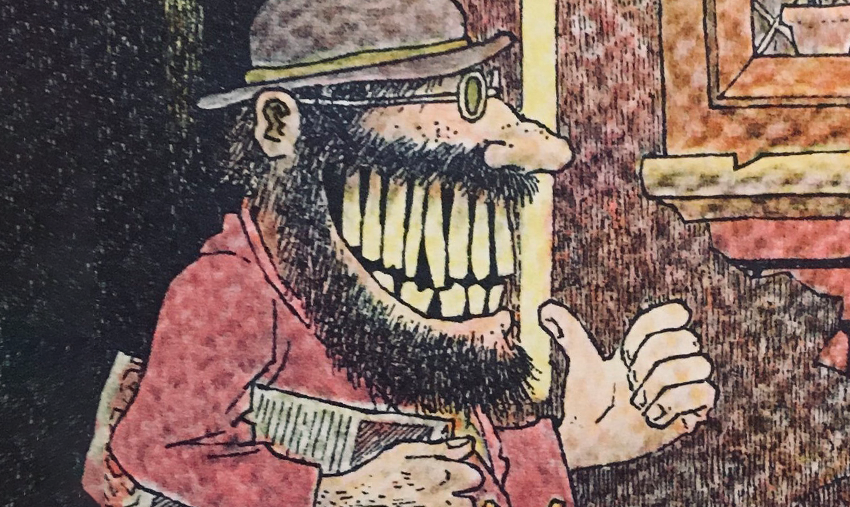Holy molars
Grin and bear this roundup of toothy news

If you look to Questionist for biting commentary, you won’t find it today. Instead, we have biting news–that is, the latest from the world of teeth. Let’s chomp down!
It’s probably lost its flavor by now
Dentistry is only a few thousand years old, but dental woes go back way further than that. For hunter-gatherers living 10,000 years ago in Sweden, their habit of chewing on birch resin—a form of mesolithic chewing gum—didn’t help matters.
A team of researchers from Turkey and Sweden recently revealed details of the gum, which was unearthed in the 1990s at an archaeological site in western Sweden. The study’s lead author said the gum was much like today’s, except unsweetened and with a more sooty color, and that “they were chewing these pitch pieces mainly in material culture to assemble new tools.”
Chewing on the resin formed a type of “glue” in their mouths, which they used to make clothing and tools, and to patch up leaky boats. Researchers didn’t only find the glue embedded in the teeth of these Mesolithic Scandanavians, they also found remnants of the food they ate–hazelnuts, mistletoe, apples, deer, turtledoves, and brown trout–as well as strains of bacteria associated with gum disease and tooth decay.
We wonder if they also used it to make double-edged swords…
We shall bite on the beaches, we shall bite on the landing grounds…
How much would you be willing to pay for someone else’s used dentures? What if that someone was Winston Churchill? Cotswold Auction Company estimates it’ll take £8,000 (about $10,000) to win the prime minister’s fake teeth. In a statement, director Liz Poole said the dentures “must be among the most unusual items we have ever sold” (we would hope so).
Churchill lost some teeth in his 20s, and had several sets of upper dentures that were mounted on gold, and constructed in such a way that he could maintain his distinctive natural lisp. This set was put up for sale by the Nigel Cudlipp, son of Churchill’s dental technician Derek Cudlipp. Nigel is lucky these are intact: “(The dentures) were prone to breaking,” Cudlipp told CNN in a 2010 interview, “especially when Churchill got a bit angry.”
Still better than Matt Damon’s potatoes
Astronauts at the International Space Station eat well, with diets that include pre-packaged meals, yogurt, and fresh fruit. They also get to munch on space-grown lettuce, which NASA introduced to the space station three years ago. But a recent Earth.com article tells us that leafy greens growing in space are at greater risk of harboring salmonella and E.coli bacteria.
A study released by a group of researchers from the University of Delaware, explains why the risk is greater in space. On Earth, plants use their roots to sense gravity, but when exposed to microgravity conditions, the confused plants lose the normal biochemical response that closes their leaf pores in response to a pathogen invasion. Scientists are urgently working on solutions to the problem including incorporating a “helper bacteria,” sterilizing seeds, or genetically modifying them.
The risk isn’t only for current astronauts on the ISS enjoying a nice salad once in a while—it has implications for the entire future of space agriculture. The lead researcher points out that because of diminishing agricultural land on our planet, “people are going to soon think seriously about alternate habitation spaces. These are not fiction anymore.” But until they get the salad thing sorted, we’ll have to content ourselves with freeze-dried ice cream and Tang.
